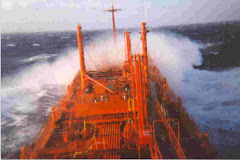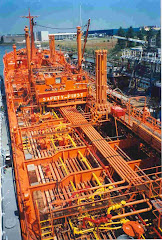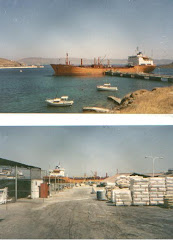Seapan's move to raise capital by a US$ 250 mio preferred shares together with a proposed US$ 75-100 mio minority stake in a containership venture with Tiger Group are raising eyebrows. Aside from possible Clayton Act violations stemming from Seaspan CEO Gerry Wang also running the new fund which may invest in competitive container companies, the nature of the fund illustrates Chinese policy to maximize its future container transport needs though Chinese-built vessels and Chinese liner companies.
Seaspan announced recently (January 21), a public offering of 9.5% Series C Cumulative Redeemable Perpetual Preferred Shares. The company had been examining for some time alternatives to raise capital to cover their ambitious CAPEX program. The use of preferred shares appears to be a means of raising capital with minimum dilution to shareholders.
The Tiger investment fund vehicle would invest in container shipping assets, primarily newbuilding vessels strategic to China. Seaspan is placing its future in Chinese liner trades, which now represent more than 70% of their fleet employment.
The Tiger investment fund vehicle would invest in container shipping assets, primarily newbuilding vessels strategic to China. Seaspan is placing its future in Chinese liner trades, which now represent more than 70% of their fleet employment.
Seaspan told investors:
“We also anticipate that we would have a right of first refusal for some negotiated duration with respect to any containership asset opportunities that are developed by the vehicle. We believe that any investment by us in the vehicle could enhance our ability to pursue current growth opportunities in the container shipping market by leveraging the vehicle’s access to capital and customer relationships. We also believe that an investment in the vehicle would allow us to continue to increase the scale of our business and realize volume discounts for newbuilding orders that we would not otherwise be able to achieve.”
The role of Gerry Wang, the Seaspan CEO who is going to also run the new fund which may invest in competitive container companies is confusing. Whilst Seaspan is based in Hong Kong, it is a US-listed company subject to the Clayton Act.
The Clayton Act states: "No person shall, at the same time, serve as director or officer in any two corporations that are, by virtue of their business and location of operation, competitors..."
The other aspect of these moves is that Chinese policy seems to be moving more to a Japanese "Keiretsu" model of interlocking business relationships and shareholdings and Seaspan is following along with this trend. We have already began to see a similar direction in the Capesize trades, where a growing share of the iron-ore business is going under long-term contracts including transport and less emphasis on spot markets. Key suppliers like Vale are building their own fleets. Further the Chinese are very keen on supporting their domestic shipbuilding industries, who have increased dramatically their capacity over the last few years to become major players.
Finally, this system depend on perpetually high growth rates in the Chinese export model, where money is constantly being channeled into new capacity. Already there are signs of overheating. Seaspan has a franchise on special relations with China, but should there be a downturn where expectations are disappointed, Seaspan will be affected with such concentration in this market.
For the time being the 'smart money' continues to give strong support to this group. Wells Fargo Securities" Michael Webber upgraded Seaspan to “outperform”, calling the company “best of breed” within the containership sector(among vessel providers to liner companies, as Seaspan has no cargo system of its own and depends on liner companies to employ its vessels):
“Seaspan currently has 11 vessels scheduled for delivery in 2011 and three in 2012, which are fully financed and will increase its capacity by 53% to over 400,000-teu,” he told clients, adding: “We believe Seaspan will have capacity to materially increase its dividend and potentially fund additional growth and pay down debt, as we expect Seaspan to generate roughly US $412 mio and US$ 528 mio in Ebitda in 2011 and 2012, up 43% and 28% [year to year], respectively.”
This mirrors the China growth story with aggressive growth and high returns on growth of multiples. The underlying investment returns on DCF with residual asset value are much lower. Seaspan's asset-heavy vessel provider business model with long-term time charters is by nature a low margin business, where higher returns can only be generated by high capital gearing and rapid growth. What makes this especially appealing is that Chinese business is considered virtually "risk free" counter party risk.
“Seaspan currently has 11 vessels scheduled for delivery in 2011 and three in 2012, which are fully financed and will increase its capacity by 53% to over 400,000-teu,” he told clients, adding: “We believe Seaspan will have capacity to materially increase its dividend and potentially fund additional growth and pay down debt, as we expect Seaspan to generate roughly US $412 mio and US$ 528 mio in Ebitda in 2011 and 2012, up 43% and 28% [year to year], respectively.”
This mirrors the China growth story with aggressive growth and high returns on growth of multiples. The underlying investment returns on DCF with residual asset value are much lower. Seaspan's asset-heavy vessel provider business model with long-term time charters is by nature a low margin business, where higher returns can only be generated by high capital gearing and rapid growth. What makes this especially appealing is that Chinese business is considered virtually "risk free" counter party risk.








